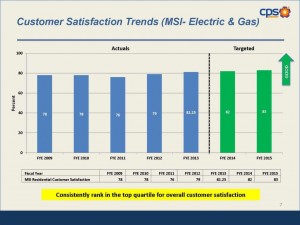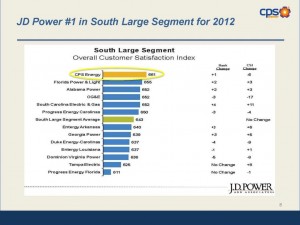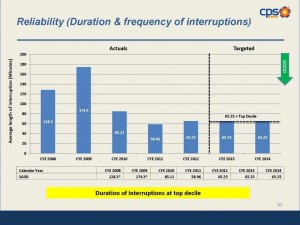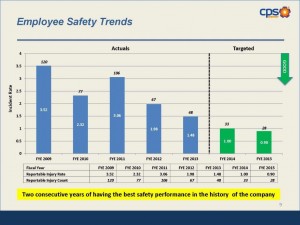 After months of rigorous analysis and back and forth with CPS Energy staff, the city of San Antonio’s chief financial officer recommended to the City Council Wednesday that it approve CPS Energy’s 4.25 percent rate increase request.
After months of rigorous analysis and back and forth with CPS Energy staff, the city of San Antonio’s chief financial officer recommended to the City Council Wednesday that it approve CPS Energy’s 4.25 percent rate increase request.
Ben Gorzell told the council at its information session that CPS Energy staff had worked diligently to make the request as low as possible while still protecting the utility’s top notch credit rating.
“We worked very closely with their staff, and we found significant improvement in the whole budget (process) since 2010, an increased rigor,” he said, “which I’m sure has to do with (CEO) Doyle Beneby’s leadership and what he’s asked staff to do.”
Gorzell made four additional recommendations to CPS Energy as part of his presentation. They include that CPS Energy:
- commit to working collaboratively with the city to study CPS Energy’s pensions and benefits plans and associated costs;
- continue to enhance its capital project prioritization process;
- continues to address customer service issues in billing and call center departments; and
- review its fuel hedging program, taking into consideration costs and potential benefits of the program.
The council, for its part, also lauded Beneby and the staff who worked on the budget and rate proposal, praising them for listening to the community and reducing the bonus program by 50 percent in both 2015 and 2016.
“Thanks for listening and fine tuning the ask,” said Councilman Cris Medina, who had taken a lead role in demanding changes to the bonus program the CPS Energy board of trustees put into place 13 years ago.
District 4 Councilman Rey Saldaña urged the utility to increase outreach to low income customers to sign them up for affordability programs.
“We’ve actually taken your words to heart,” said Beneby, noting that efforts are now underway to identify those who have multiple late payments, to see if they qualify for the increased affordability discount.
Ron Nirenberg, who represents District 8, praised the utility for its extensive public outreach efforts, which included customer care fairs in districts across the city, a public input session, attendance at various council events, extensive social media outreach and blog posts on topics ranging from how rates are determined to how the rate increase will be used.
Asked whether city staff ever recommends against an increase, Gorzell explained that the process was designed to get to a place where the city and the utility are aligned.
“We started out in a different place,” he said, then the two staffs go back and forth until city staff is satisfied that it can recommend the request. In this case, CPS Energy responded by slashing its bonus program, increasing money to help low income customers pay their bills, and delayed some capital projects to reduce the rate increase request from 4.75 percent to 4.25 percent.
The City Council is expected to vote on the increase on Nov. 7.
RELATED STORIES
CPS Energy reduces rate request to 4.25 percent
CPS Energy to reduce EIP, lower rate request
First round answers to City Council questions on rate increase
Rate increase request: Letter from the CEO
Capital projects, infrastructure upgrades drive rate increase request

 As you know, the North SA Chamber has a long history as an advocate for business-friendly initiatives and legislation, as well as infrastructure improvements. We work to consistently champion a pro-business agenda and endeavor to serve as a collective voice to represent our large and small business members in government policy and legislative issues, especially at the local and state levels.
As you know, the North SA Chamber has a long history as an advocate for business-friendly initiatives and legislation, as well as infrastructure improvements. We work to consistently champion a pro-business agenda and endeavor to serve as a collective voice to represent our large and small business members in government policy and legislative issues, especially at the local and state levels. When police alerted CPS Energy that a man posing as a utility employee gained entrance into a house on the city’s West Side with the intent to assault the resident, CPS Energy’s communications team swung into action.
When police alerted CPS Energy that a man posing as a utility employee gained entrance into a house on the city’s West Side with the intent to assault the resident, CPS Energy’s communications team swung into action.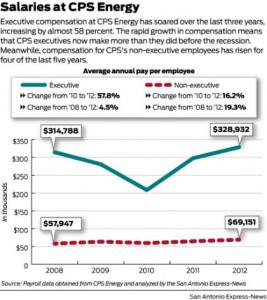
 CPS Energy’s electric reliability is within the top tier of the industry, its employees have increased safety to a record high for the second year in a row, and customer satisfaction remains high.
CPS Energy’s electric reliability is within the top tier of the industry, its employees have increased safety to a record high for the second year in a row, and customer satisfaction remains high.